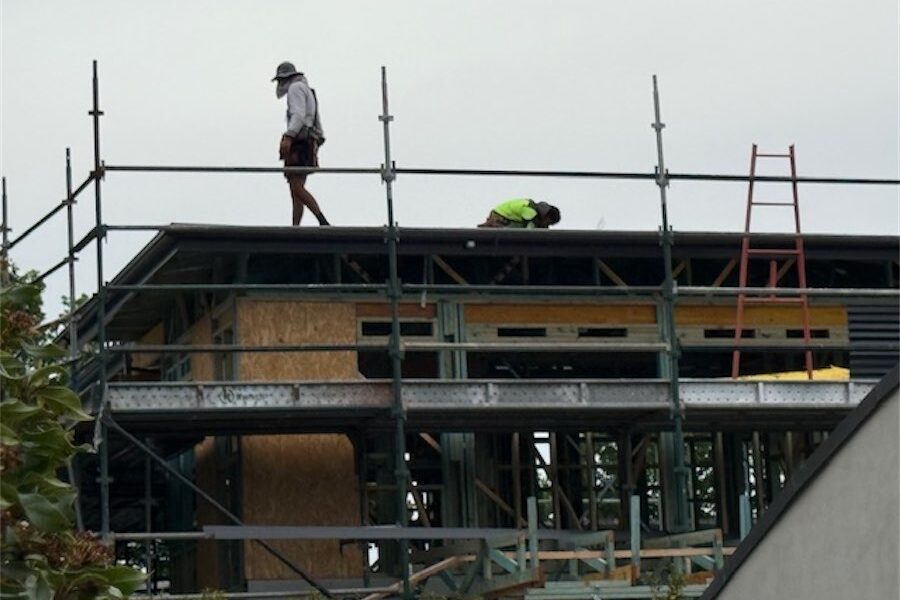
By Poppy Johnston in Canberra
Australia needs to build more homes – and fast – but the outlook for construction is souring rather than improving.
Leading economists have downgraded expectations for dwelling construction, with the political focus shifting to infrastructure – roads, water pipes and powerlines – as the chief culprit holding back housing supply.
Confidence in the nationally agreed home-building goal of 1.2 million homes over five years, aimed at boosting supply and improving affordability, has been waning as labour shortages and other challenges plague the industry.
In its business outlook report, Deloitte Access Economics materially downgraded its forecasts to fewer than one million new homes expected to be finished over the five-year horizon.
Partner and report co-author Stephen Smith said stubbornly high construction costs were adding to the industry’s woes.
“With permanently higher construction costs, the sector will be both unwilling and unable to lift supply unless property prices also lift,” he said.
“That is, housing affordability will get worse before it has a hope of getting better.”
The federal opposition believes the 1.2 million homes target is unattainable and has unveiled a policy to unlock 500,000 new dwellings by spending $5 billion on sewerage, water and other infrastructure that underpins new housing.
Labor has its own pot of funds set aside.
Housing Minister Clare O’Neil was in suburban Sydney on Thursday, talking up a $26 million contribution for roads and powerlines needed for a new development.
The funding for the Bonnyrigg renewal project, expected to deliver about 3000 homes, falls under the $1.5 billon earmarked for states and territories to deliver infrastructure to unlock housing.
Ms O’Neil said the federal government’s infrastructure plan differed from the opposition’s “road to nowhere” that would “push Australians hours away from their families and from their work”.
“Our government’s housing infrastructure plan provides Australians and their families with more choice about where they want to live, whether that be in apartments or houses, in our cities, suburbs or regions,” she said.
Opposition infrastructure spokeswoman Bridget McKenzie says the coalition’s plan differs by going directly towards infrastructure rather than planning and bureaucracy.
The Nationals senator believes the private sector will deliver the new homes once the enabling infrastructure is installed.
“The builders are ready to go, the councils have done the planning … everyone’s geared up and they just need that, you know, $5 million for a road,” Senator McKenzie told ABC Radio on Wednesday.
As the housing crisis continues, there’s been no shortage of policy responses floated.
Axing stamp duty and replacing it with a land tax is one example.
While a state and territory responsibility, the Business Council of Australia is urging the federal government to set up a reform fund to incentivise states to take the leap.
The housing minister agreed it was “not a great tax”, though stopped short of advocating for a policy shift.
“What I’m saying is an abject truth in this matter … and that’s why we’re seeing some states and territories do some things to try to wind it back,” Ms O’Neil told Nine’s Today program on Thursday.
Who can be trusted?
In a world of spin and confusion, there’s never been a more important time to support independent journalism in Canberra.
If you trust our work online and want to enforce the power of independent voices, I invite you to make a small contribution.
Every dollar of support is invested back into our journalism to help keep citynews.com.au strong and free.
Thank you,
Ian Meikle, editor





Leave a Reply